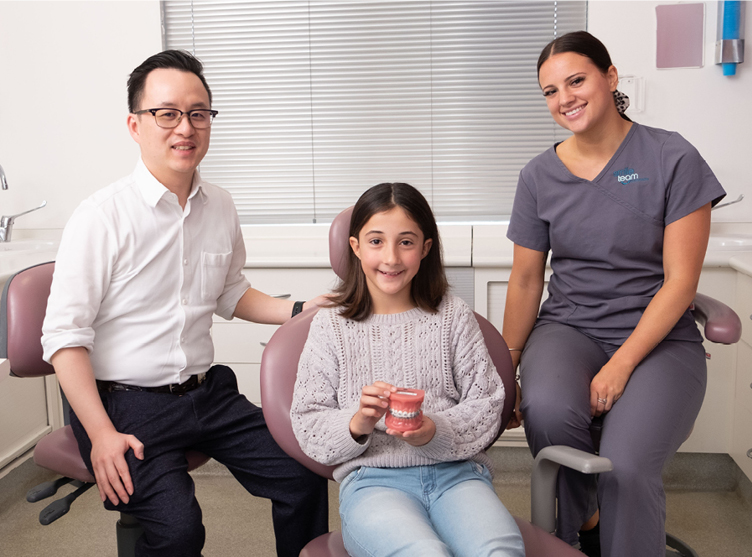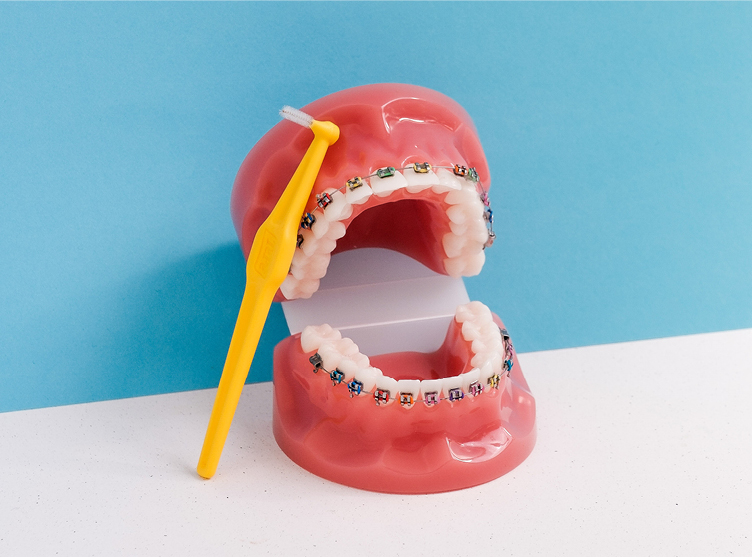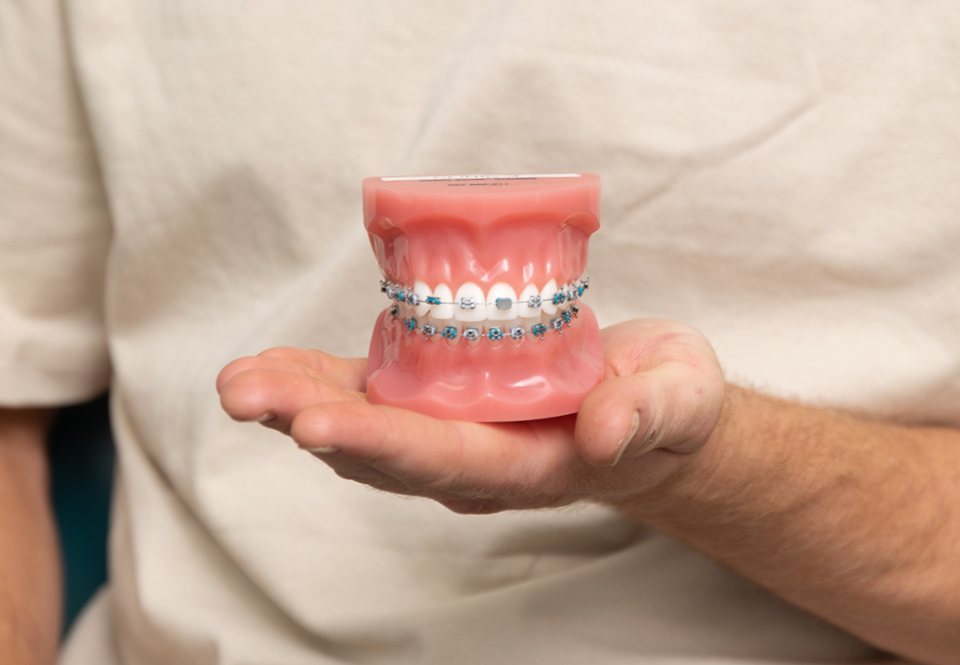
Braces are devices used in orthodontics to align and straighten teeth, by positioning them in relation to a person’s bite. Besides, they’re used to rectify malocclusion, overbite, underbite, crossbite, open bite, deep bite, crooked teeth, and other flaws of the teeth and jaw.
Tightening braces is an integral part of the orthodontic treatment process as it adjusts the tension on the wires to gradually guide your teeth and jaw into the desired position.
How do Braces work?

Braces operate by applying pressure on the teeth in a controlled manner, gradually moving them into straight teeth. Traditional braces are metal brackets glued to your teeth and linked with an archwire. The archwire is then passed through the brackets. The wire pressures the teeth over time, causing them to move into their desired position. You will visit an orthodontist regularly to get your braces adjusted periodically to further guide your teeth in the right direction.
How are Braces Tightened?
During orthodontic treatment time, having braces tightened is crucial for effective results. Orthodontists plan and execute braces tightening appointments. The braces tightening appointment includes replacing rubber bands and addressing braces pain.
At the beginning of treatment, the wires put much pressure on the teeth. But as time goes by, this pressure on your teeth slowly decreases. To keep the pressure on your teeth, braces are tightened regularly. Your orthodontist tightens braces or may add wires to your brackets to keep braces tightened and exert pressure on the teeth. Pain after adjustment appointments is normal; you might feel sore and sensitive, lasting a few days.
How often do braces get tightened?
Each case is different, so there is no precise time when to tighten braces. Depending on your case, your orthodontist will determine the braces adjustment appointment.
The frequency of your orthodontic appointments for braces tightening depends on the type and severity of the malocclusion (misalignment) you’re treating. Typically, appointments are spaced anywhere from four to eight weeks apart. If your teeth require more drastic repositioning, they may need to be tightened more frequently to apply more pressure on your teeth.
What Should You Do Before Your Braces Tightening?

-
Preparing for Your Appointment
Arrive at least 15 minutes before your appointment, and write down any questions or concerns that you might have so that they can be addressed during the visit.
-
Managing Discomfort
Talk to your orthodontist about strategies to alleviate potential pain before the appointment.
-
Communicating Concerns
Remember that your orthodontist helps you in straightening teeth and overall oral health. Feel free to talk to them about potential concerns before the appointment.
What Exactly Happens During the Braces Tightening Process?

-
Examination and Assessment
When you arrive for your appointment, the orthodontist examines and assesses your teeth condition by taking x-rays or other images to better understand the situation.
-
Making Adjustments
Your orthodontist will decide on the degree of adjustment that needs to be made. It may involve tightening or loosening certain bands or brackets and changing wires for additional pressure.
-
Applying New Ligatures and Bands
Your orthodontist will use special ligatures or elastic bands to ensure that your teeth are held in the desired alignment. These bands, available in different sizes and colours, can be adjusted as necessary to achieve the best outcome for your treatment.
What to Expect After Braces Tightening?
-
Discomfort During Tightening
It’s normal to experience discomfort or even pain during the braces tightening process as your teeth and jaw are adjusted. It is usually only temporary and should subside after a few days. If you find it extremely painful, please let your orthodontist know.
-
Immediate Effects
Immediately after the procedure, your teeth may feel tenderness or soreness. It is completely normal and shouldn’t cause any long-term issues.
-
Managing Discomfort After Tightening
To help manage any pain or soreness after having your braces tightened, your orthodontist may prescribe over-the-counter anti-inflammatory medication for pain relief and recommend applying a cold compress or ice pack. It may also help to ease discomfort to sip ice water or eat cold foods.
How to Take Care of Your Braces?
Proper oral hygiene, dietary considerations and protecting your braces are essential for optimal outcomes and avoiding dental problems.
Oral Hygiene
- Brush your teeth twice with fluoride toothpaste every day, as well as flossing. Use a soft-bristled brush and angle it to your gums to clean around the brackets.

Dietary Considerations
- A soft food diet like mashed potatoes is a good option because soft foods won’t get stuck in the brackets. Soft food can also minimise pain after adjustments. Avoid sticky foods such as caramels, chewing gum, taffy and gummy bears, as they can pull off brackets or damage wires.
Protecting Your Braces
- Avoid activities that would cause damage to your braces, including chewing on hard foods and hard items like pens or pencils. Wear a mouth guard when playing sports and other contact activities.
Frequently Asked Questions (FAQs)
Are the braces tightening painful?
The braces hurt due to the pressure on teeth to guide them into position. Getting braces tightened may cause you to feel discomfort, but this should be temporary and should subside soon after.
Can I normally eat after tightening my braces?
Yes, provided you eat soft foods, avoid sticky sweets, limit sugary and acidic beverages, and chew with your back teeth rather than your front ones.
Can I continue playing sports with braces?
It is generally safe to continue playing sports while wearing braces, but take extra precautions to protect the braces and your teeth. Your orthodontist may recommend wearing a mouth guard to protect your teeth and avoiding contact sports or other activities that may cause trauma to the mouth.
How long does the entire treatment take?
The time it takes for braces depends on the severity of the misalignment and other individual factors. The treatment can generally range from six months to two years, depending on the individual case.
What if a bracket or wire feels loose between appointments?
If you experience issues, such as a loose bracket or arch wire between appointments, you must immediately contact your orthodontist for advice and guidance. They can provide you with a temporary solution until your next appointment.
How can I ensure the success of my braces treatment?
Ensuring the success of your braces treatment involves proper oral hygiene, following the dietary guidelines recommended by your orthodontist, and avoiding any habits or activities that may damage the brackets or wires. Patients should attend all regular appointments with their orthodontist as scheduled.
Will the braces tightening process affect my speech?
The braces tightening process itself shouldn’t have any significant impact on your speech. However, getting used to speaking with the brackets and wires may take some time. Over time, you should be able to adjust and speak normally again.
Conclusion

Brace tightening ensures the effectiveness of orthodontic treatment. It’s normal to experience discomfort during and after the procedure, but this usually subsides after a few days. Proper oral hygiene, a suitable diet, and braces protection are critical to achieving the best results.